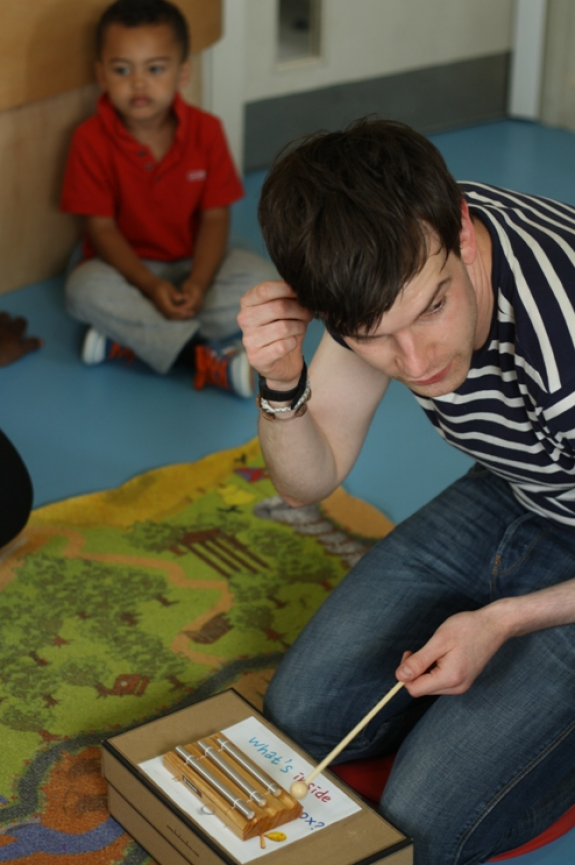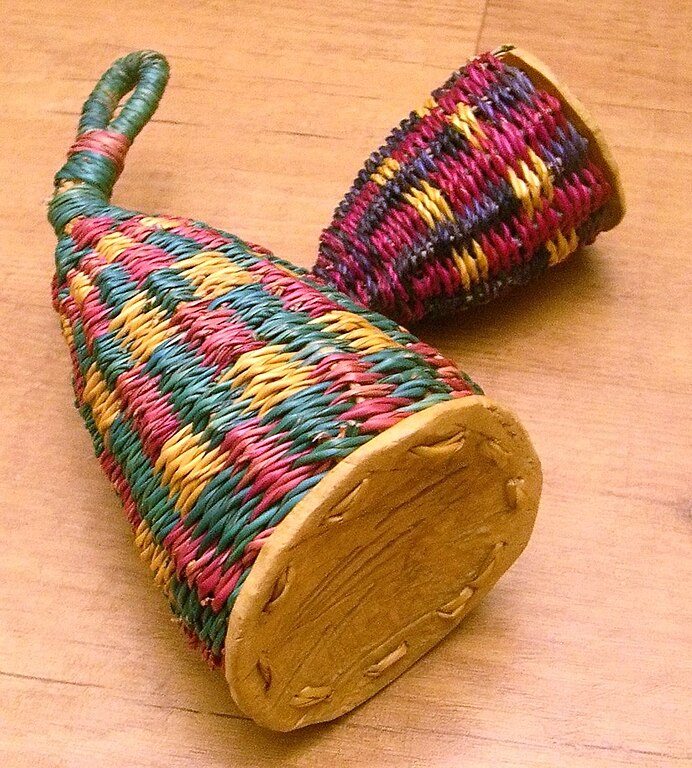Thomas Johnston 's profile
My Posts
The Listening Box | Tiny Voices Early Years Music Pilot
2014-02-04
The Listening Box

Description
The Listening Box and Tiny Voices
During 2012, I had the pleasure of facilitating a longitudinal (16-week) early years music pilot called Tiny Voices which was initiated by Common Ground in partnership with Early Childhood Ireland and The Base Ballyfermot. Tiny Voices was (and continues to be) a hugely formative project in terms of my early years practice, and it gave me the opportunity to collaborate with those creative and inspirational people behind Common Ground and The Base. Over the course of the pilot, I had the opportunity to explore and try out various approaches and strategies (to various degrees of success!), and the research element of the pilot (conducted by Mairead Berrill for Common Ground) ensured that planning and reflection were always deeply embedded aspects of the process.
Exploring Instruments and Found Sounds: The Listening Box
From one workshop to the next, one of my intentions was to introduce the children to a wide range of sounds (found sounds as well as instruments) which we would then incorporate into an existing song, piece of music, or group composition.
One very simple yet, I feel, effective idea which was introduced as a way of creating intrigue around discovering and exploring new sounds was The Listening Box. The Listening Box was a means of introducing sound textures gradually, to ensure that children had the time to experience, play with, and enjoy each sound to its fullest. The idea emerged in part from conversations I had with childcare practitioners where it was said that although their childcare setting had boxes full of all kinds of instruments, they felt that an alternative approach was needed to engage the children more fully and effectively with the instruments. Before each workshop began, I would place an instrument (a triangle, chime bar, or hand bell, or even a stone, feather, or twig) into a cardboard shoe-box on which I had pasted a picture of a large ear (in hindsight, perhaps a little too literal, but the children found it amusing!!) with the text What’s Inside the Listening Box?. As I gently shook the box at the beginning of each workshop, the children would guess which instrument lay inside, but we would have to wait until the end to find out. As each workshop then moved towards the final activities, the children would discover which instrument was within, and the instrument/object would be incorporated into a song or other activity.
As the weeks progressed, these ’new’ sounds and instuments would be integrated from the beginning of the workshop, with another sound hidden inside The Listening Box.
Discovering the Caxixi
During one workshop, I placed a caxixi (a Brazilian percussion instrument pronounced ka-shee-shee) into The Listening Box. On discovering the caxixi, we spoke a little bit about Brazil (how far away it was across the ocean; huge forests and long rivers etc.) and gradually a repeated chant (4/4 rhythm) emerged as the children were passing the caxixi around the circle:
Caxixi, Caxixi
Pass it around
And tap it on your knee

Participatory Performance
Connecting back to my introductory ideas around ‘participatory’ and ‘presentational’ performance, this activity was an example of a highly participatory Tiny Voices activity in that from my perspective (and I would argue, from that of the children/childcare practitioners), there was no artist/audience distinction, and my intention was to involve all participants (including childcare practitioners, children and volunteers) as active, full participants in the activity.
Concerns and Thoughts
While The Listening Box was embraced by children and practitioners alike, I have to say that I also found myself at times questioning the appropriateness of this activity to how young children ’should’ discover and experience music – for example, I found myself comparing it to a child being introduced to one colour at a time as they discovered painting, or one word at a time as they immersed themselves in stories and books. Surely, that would go against how children should experience art, literature, and music? I asked myself, ‘Is this the ‘right’ thing to be doing?’. However, I always came to the conclusion that while it is important to create a space for children to jump into a music box (quite literally) full of all sorts of wonderful sounds, colours, textures, and instruments - playing and having fun - there is also a space for more careful consideration of sound objects with the guidance of an experienced musician who has the intention to lead the children to a place of greater experience in music. During Tiny Voices, The Listening Box was one way in which I attempted to ’lead’ participants to this place.
Please follow this link to view the Tiny Voices Report: http://issuu.com/cgpublish/docs/tiny_voices


No comments added